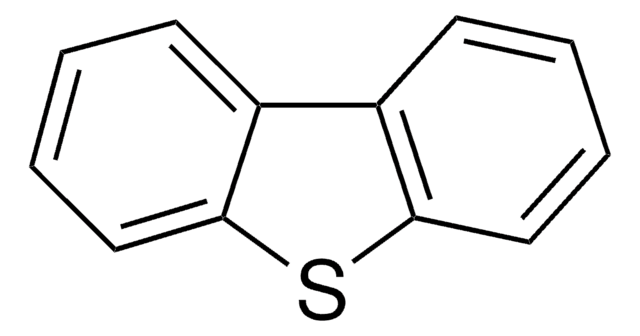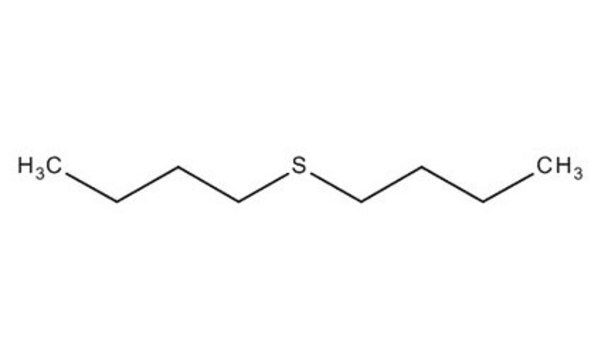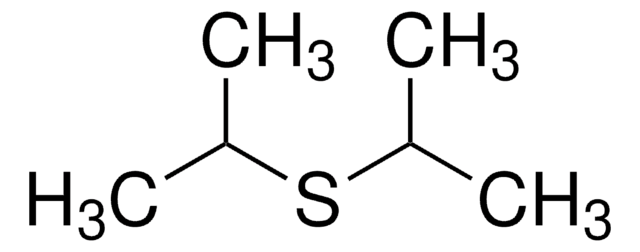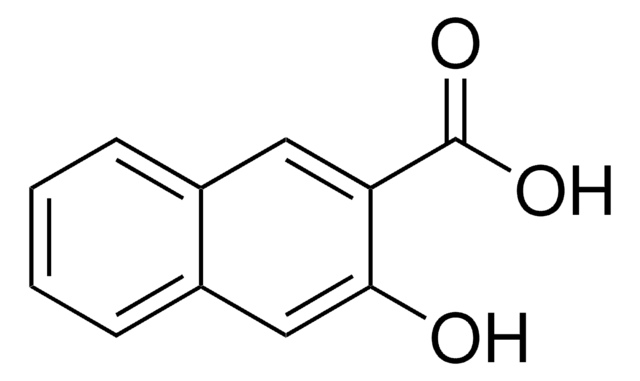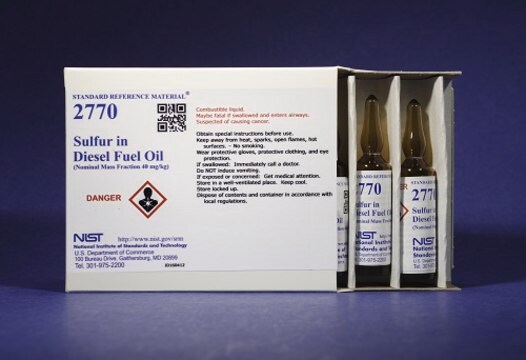Wichtige Dokumente
51491
Dibutylsulfid
≥98.0% (GC)
Synonym(e):
1,1′-Thiobisbutan, Butylsulfid, NSC 8460
About This Item
Empfohlene Produkte
Dampfdichte
5.07 (vs air)
Dampfdruck
5.17 mmHg ( 37.7 °C)
Assay
≥98.0% (GC)
Brechungsindex
n20/D 1.452 (lit.)
n20/D 1.453
bp
188-189 °C (lit.)
mp (Schmelzpunkt)
−76 °C (lit.)
Dichte
0.838 g/mL at 25 °C (lit.)
Funktionelle Gruppe
thioether
SMILES String
CCCCSCCCC
InChI
1S/C8H18S/c1-3-5-7-9-8-6-4-2/h3-8H2,1-2H3
InChIKey
HTIRHQRTDBPHNZ-UHFFFAOYSA-N
Suchen Sie nach ähnlichen Produkten? Aufrufen Leitfaden zum Produktvergleich
Verwandte Kategorien
Allgemeine Beschreibung
Anwendung
- Environmental Odor Diagnostics: Dibutyl sulfide was utilized in developing a diagnostic method for complex odor issues in micro-polluted source water, highlighting its role in environmental monitoring and pollution control (Guo et al., 2021).
- Surface Chemistry Investigations: The adsorption and manipulation of dibutyl sulfide on copper surfaces were studied, providing insights into its interactions at the molecular level (Jensen et al., 2007).
- Biosensor Development for Chemical Warfare Detection: Dibutyl sulfide′s effects were explored in the context of stand-off tissue-based biosensors for detecting chemical warfare agents, utilizing photosynthetic fluorescence induction, it is crucial in constructing the inertial forces of launching or dropping into suspected danger zones and, with encrypted telecommunication data transmission (Sanders et al., 2001).
Lagerklassenschlüssel
10 - Combustible liquids
WGK
WGK 2
Flammpunkt (°F)
170.6 °F - closed cup
Flammpunkt (°C)
77 °C - closed cup
Persönliche Schutzausrüstung
Eyeshields, Gloves, type ABEK (EN14387) respirator filter
Hier finden Sie alle aktuellen Versionen:
Besitzen Sie dieses Produkt bereits?
In der Dokumentenbibliothek finden Sie die Dokumentation zu den Produkten, die Sie kürzlich erworben haben.
Kunden haben sich ebenfalls angesehen
Unser Team von Wissenschaftlern verfügt über Erfahrung in allen Forschungsbereichen einschließlich Life Science, Materialwissenschaften, chemischer Synthese, Chromatographie, Analytik und vielen mehr..
Setzen Sie sich mit dem technischen Dienst in Verbindung.
